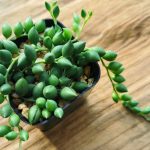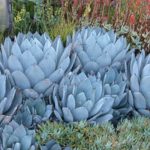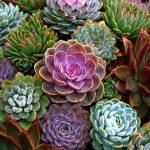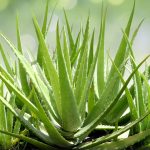Learn all about blue chalksticks, also known as Curio repens, a charming succulent originating from South Africa. Discover valuable insights on nurturing this plant with expert advice from Rachel Garcia.
Key Information
- Plant Type: Succulent
- Family: Asteraceae
- Genus: Curio
- Species: Curio repens (formerly Senecio serpens)
- Native Area: Southern Africa
- Exposure: Full sun
- Height: 12″
- Watering: Low requirements
- Pests & Diseases: Mealybugs, root rot
- Maintenance: Low
- Soil Type: Sandy and well-draining
Overview of Blue Chalksticks
Blue chalksticks or Curio repens, previously known as Senecio serpens, is a standout succulent species with cylindrical blue-grey ‘chalk’ leaves. This charming plant, resembling a sparse shag rug, is native to South Africa and requires minimal care to thrive, making it an excellent choice for beginner gardeners. Feast your eyes on the following steps to ensure your Curio repens flourishes.
Planting Guidelines
For ideal growth, plant your blue chalksticks in a sunny location receiving at least six hours of direct sunlight daily. Proper drainage is crucial, especially to prevent root rot in Curio repens. Whether planted in the ground or containers, ensure the soil is well-draining, using a cactus or succulent mix or amending garden soil appropriately.
Nurturing Your Blue Chalksticks
Light Requirements
Curio repens thrives in full sun, with an option for partial shade. Position your plant in a sunny spot indoors or outdoors, ensuring it receives ample sunlight for robust growth. Consider supplementing natural light with a grow light indoors.
Watering Techniques
Adopt the ‘soak and dry’ method when watering your blue chalksticks. Allow the soil to completely dry out between watering sessions to prevent overwatering. Be cautious not to underwater or overwater, as it may impact the plant’s health.
Soil Composition
Utilize well-draining soil suitable for succulents to provide optimal growing conditions for Curio repens. Enhance drainage by mixing in sand or perlite if the soil retains water, preventing potential issues like root rot.
Temperature Considerations
Maintain appropriate temperatures for your blue chalksticks, ensuring they are not exposed to consistent freezing conditions. When cultivating in cooler regions, consider container planting for flexibility in protecting your plant during extreme weather.
Fertilization Process
Provide a yearly dosage of fertilizer for your blue chalksticks, adjusting as needed during the growing season. Opt for a low-nitrogen liquid fertilizer to support healthy growth without causing imbalance in nutrient levels.
Maintenance Tasks
Regularly check your Curio repens for potential overgrowth, conducting repotting if necessary to accommodate its size. Monitor and trim the plant as needed, ensuring it maintains its desired shape as it grows.
Propagation Methods
Expand your collection by propagating Curio repens through division or cuttings. Safely separate clumps or take stem and leaf cuttings during the growing season to cultivate new plants with ease.
Common Challenges
Common Issues
Despite being quite resilient, Curio repens may still face some challenges with pests and diseases. Early detection is key to resolving these problems before they escalate and harm your plant.
Etiolation
Etiolation is a frequent issue seen in succulents, where the plant becomes leggy with sparse leaves. To address this, it’s necessary to trim and propagate the elongated branches.
The primary cause of etiolation is insufficient sunlight, which prompts the plant to stretch out in search of light. Placing your Curio repens in a sun-drenched spot can help prevent this stretching.
Pests
Mealybugs and scale are common pests that can affect succulents. Mealybugs lead to a black mold while scale insects cause yellowing and leaf loss. Other indicators include wilting, discoloration, and ant presence.
To combat these pests, gently wipe the plant with a cloth soaked in rubbing alcohol or use insecticidal soap. Mist your succulent with a neem oil and water mixture as a preventive measure, or sprinkle Diatomaceous Earth around the plant to deter insects.
Diseases
Root rot is a significant concern for succulents and cacti, often stemming from overwatering or poor drainage. Rotted areas appear brown and mushy, affecting roots, leaves, and stems.
Prevent root rot by ensuring good drainage and allowing the soil to dry completely between waterings. If rot has already set in, remove the affected parts, replant in dry soil, and resume watering after a brief healing period.
FAQs
Q. How do you trim Curio repens?
A. Trim back stems at their base to prevent rot and bacterial growth. Ensure the trimmed area stays dry for a few days.
Q. Should I remove blue chalksticks flowers?
A. It’s optional, but removing flowers can redirect growth. Deadheading is a choice.
Q. Why is my Curio repens turning purple?
A. Purple coloration is a response to sun and heat, common for blue chalksticks.
Q. Is Curio repens toxic?
A. Yes, this succulent is considered toxic to humans and pets.
In Conclusion
With its captivating hues and low-maintenance nature, Curio repens is a prized addition to any garden. Adhering to proper watering practices will help you cultivate this plant without encountering major hurdles.






